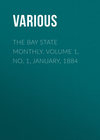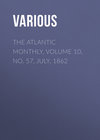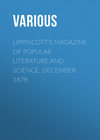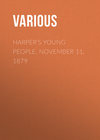Kitabı oku: «The Journal of Negro History, Volume 7, 1922», sayfa 5
THE FIRST NEGRO CHURCHES IN THE DISTRICT OF COLUMBIA
The early Negro churches in the District of Columbia were Methodist and Baptist. The rise of numerous churches of these sects in contradistinction to those of other denominations may be easily accounted for by the fact that in the beginning the Negroes were earnestly sought by the Methodists and Baptists because white persons of high social position at first looked with contempt upon these evangelical denominations; but when in the course of time the poor whites who had joined the Methodist church accumulated wealth and some of them became aristocratic slaveholders themselves, they assumed such a haughty attitude toward the Negroes that the increasing race hate made their presence so intolerable that the independent church movement among the Negro Methodists and Baptists was the only remedy for their humiliation. The separation of the Negro Methodists was made possible at a much earlier date in the District of Columbia, when Richard Allen had set the example by his protest against discrimination in the Methodist church, of Philadelphia, which culminated in the establishment of the distinct Negro denomination, and also when the Zionites in New York City, led by James Varick, had separated from the Methodists there for similar reasons. It was not until the time of the critical period of the slavery agitation, however, that practically all of the Protestant churches provided separate pews and separate galleries for Negroes and so rigidly enforced the rules of segregation that there was a general exodus of the Negroes, in cities of the border States, from the Protestant churches.58 The District of Columbia had the same upheaval.
The records show that among the Methodists the alienation developed sooner than in any of the other churches. "As early as 1820," according to an investigator, "the colored members of the Ebenezer Church on Fourth Street, East, near Virginia Avenue, erected a log building in that vicinity, not far from the present Odd Fellow's lodge, for their social, religious meetings and Sabbath school. About the same time some of the leading members among them, George Bell and George Hicks, became dissatisfied with their treatment, withdrew, and organized a church in connection with the African Methodist Episcopal church. At first they worshipped in Basil Sim's Rope-walk, First Street east, near Pennsylvania Avenue, but subsequently in Rev. Mr. Wheat's school-house on Capitol Hill, near Virginia Avenue. They finally purchased the old First Presbyterian Church at the foot of Capitol Hill, later known as the Israel Bethel Colored Methodist Episcopal Church. Some years thereafter other members of the old Ebenezer Church, not liking their confined quarters in the gallery, and otherwise discontented, purchased a lot on the corner of C Street south and Fifth Street east, built a house of worship, and organized the "Little Ebenezer Methodist Episcopal Church."59
About the year 1825 a third colonization from the original Ebenezer Church took place. One grievance among others was that the Negro members were dissatisfied with their white pastors because they declined to take the Negro children into their arms when administering the rites of baptism. In 1839 this alienation developed into an open rupture, when thirteen class leaders and one exhorter left the mother church, and, after purchasing a lot on the Island, erected a house and formed a Negro church, independent of the Methodist Episcopal body, under the name of the Wesley Zion Church, and employed a Negro preacher. Among the prominent men in this separation were Enoch Ambush, the well-known schoolmaster, and Anthony Bowen, who for many years was an estimable employee in the Department of the Interior.60 Mr. Bowen served as a local preacher for forty years, and under his guidance St. Paul's Negro Church on the Island was organized, at first worshipping in E Street Chapel."61
The white Methodists of Georgetown elbowed their Negro membership out of their meeting house, but for fourteen years, that is, until 1830, they kept no written church records except a list of this one sold to Georgia, another to Carolina, a third to Louisiana, and others to different parts—annals befitting the time and place, and a searchlight on conditions then prevailing at the National Capitol and elsewhere south of the Mason and Dixon line. In 1830 the membership was large and much spirituality was manifested. White ministers of more than local note were anxious to serve these people. At the instance of one of them, Mr. Roszel, the church was first called Mount Zion Methodist Episcopal Church, because it was located on a hill. The feasibility of having Negro ministers to preside over Negro churches was proposed in 1849 and was a fruitful theme for several years.62 In fact, it was due to this effort that the organization of Union Wesley A. M. E., the John Wesley, and Ebenezer Churches followed. John Brent, a member of Mt. Zion, led in the first named movement, and Clement Beckett, another reformer, espoused the organization of Ebenezer in 1856, as a church "for Negroes and by Negroes."63
The beginnings of the Israel Colored Methodist Episcopal Church centered around the evangelical activity of David Smith, a native of Baltimore, the most energetic of individual forces in the organization of the first African Methodist Episcopal Church in the city of Washington. The presence of a Negro preacher was objectionable to many Negroes themselves. As early as 1821 Mr. Smith was assigned to Washington but his coming was the signal for personal attack, and he was mobbed by members of his own race, communicants of the Methodist Episcopal Church, who were opposed to the African Methodists. He persisted, however, and having secured an old school house for $300, entered upon his work with such zeal and energy that he commanded success. Among the men and women active in the first efforts were Scipio Beans, George Simms, Peter Schureman, George Hicks, Dora Bowen, William Costin, William Datcher, William Warren and George Bell, one of the three colored men who fifteen years before had erected a building for a Negro school.
Israel promptly became a member of the Baltimore Conference, one of the oldest conferences of the African Methodist Episcopal Church. The first Negro conference to meet in Washington was held in Israel during the administration of Andrew Jackson. Its assembly caused a sensation and gave the church and the denomination a standing surpassing that of all other Negro churches in the community. It was also largely through the personalities of the ministers in charge of Israel that its influence on its congregation and through them on the community must be judged. Among those in the period of its African Methodist affiliation were David Smith, Clayton Durham, John and William Cornish, James A. Shorter, Daniel A. Payne, Samuel Watts, Jeremiah R. V. Thomas, Henry M. Turner, William H. Hunter, George T. Watkins, James H. A. Johnson, and finally Jacob M. Mitchell, the last of the African Methodist Episcopal pastors at Israel. Smith and Durham were colleagues of Richard Allen; William Cornish was in the antislavery struggle; Hunter and Turner served as chaplains in the Union Army; and Payne, Wayman, Shorter and Turner became bishops of the African Methodist Episcopal Church.
The career of Bishop Payne is widely known, but some incidents in his pastorate deserve emphasis. Under a prevailing law he had to secure a bond of one thousand dollars before he could remain in the District of Columbia and officiate as a minister. The building being without pews and the people too poor to buy them, Payne, who had learned the trade of a carpenter, bought tools, threw off his coat, and, with the aid of the society furnishing the lumber, in a few weeks seated the basement of the church. The first Negro ministers' union in Washington was organized by Bishop Payne, the other two members being John F. Cook of the Fifteenth Street Presbyterian Church and Levi Collins of Wesley Zion.
It was during the Civil War, however, that the influence of Israel was at its maximum. Then it was that the intellectual genius, the fiery pulpit orator, the daring and unique Henry McNeal Turner, was not only a conspicuous preacher but preeminent as a national character. These were stirring times. All eyes were on Washington. Israel Church played a leading part in the drama. Here the members of Congress, prominent among whom at the time were Benjamin F. Wade, Thaddeus Stevens and Henry Wilson, addressed the Negro citizens on the dominant issues of the day, buoying them up in the midst of their darkness and gloom. At this time the Israel Lyceum was an institution not unlike the Bethel Literary Association of thirty years later, that drew the most intellectual men to listen to lectures, participate in discussions, and read dissertations on timely topics.64
In reckoning the influence65 of this church the individuals whose place was in the pew must not be forgotten. The minister passes from church to church; the layman remains. In hurried review there comes to mind Alethea Tanner, who rescued the church when it was about to be sold at auction. There were George Bell and Enoch Ambush, who operated in this church basement a large school which was maintained for thirty-two years. Honorable mention belongs here also to Rev. William Nichols whom, because of his high ideals, Bishop Payne, in his History of the African Methodist Episcopal Church from 1816 to 1856, classed as "a man of more than ordinary intelligence firmly opposed to the extravagent zeal and rude manners which characterized so many of the leading men of his denomination." He was the "veritable hero who had aided the martyred Torrey in covering the escape of many slaves from the District of Columbia to Canada and who when by accident he learned that suspicion rested on him the fear of arrest was so great on his mind as to induce the paralysis which led to his (Nicoll's) sudden death."66
Some years later a sermon preached at Israel by Bishop John M. Brown, to whom the writer was a listener, deeply stirred the congregation. At the time I did not understand what caused the tumult until I learned from Rev. James Reid, a local preacher, that the church was negotiating for another lot on which to erect a new building, and the contention was whether the title to the new site should be held in trust for the congregation or for the denomination. The people contended that the property should be held in trust for them; the bishop, on the other hand, maintained that it should be in the name of the trustees of the denomination. The people were insistent and won their contention. A step further was the repudiation of the appointment made for them by the bishop, and the severance of their relations with the A. M. E. church made them independent. After a short interval Israel joined the Colored Methodist Episcopal Church, which had been set apart in 1870 by the M. E. Church, South.67
During these years the Asbury Methodist Episcopal Church was also in the making. Certain records show January 15, 1836, as the date of the organization of the Asbury Aid Society. These workers were originally a part of the Old Foundry Church. When this congregation augmented so that the gallery occupied by the Negro membership became too congested for their accommodation, it became necessary to find more suitable quarters. The old Smothers School House on H Street near Fourteenth was rented for their use, but it, too, became inadequate, making the purchase of ground on which to build an immediate necessity. Thomas Johnson, Lewis Delaney, and Benjamin M. McCoy were constituted the building committee that secured from William Billings the lot on which the church was ultimately built. The Foundry Quarterly Conference, under whose authority they were functioning, elected trustees and a building committee to secure funds and pay for the building, but no regular church organization was immediately effected. These communicants remained under the sole management and control of the Foundry Church until the organization of the Washington Conference in the Civil War. Originally there were two Negro preachers, one a deacon, the other a licentiate, and two exhorters in these early days. There were three stewards, two black and one white. These constituted the officiary and were members of the Foundry Quarterly Conference.
After the Annual Conference of 1841, when there were, according to the stewards' records, 423 Negro members, an appeal was made to the Quarterly Conference of the Foundry for a preacher to take more direct supervision of the church. By order of the bishop, Rev. James M. Hanson, a supernumerary of the Foundry Church was appointed to take the charge of Asbury as its regular minister. Though a separate charge, Asbury was not a separate station, and it continued in subordination to the Foundry Church. After Hanson's appointment, regular weekly meetings were established, but the white leaders did not seem to succeed, for four of them had by this time resigned. In 1845 there was but one white leader remaining, and he did not meet regularly with the Negro leaders.68 Again in 1851, therefore, there was an appeal to the presiding bishop and elders of the Baltimore Annual Conference (white) praying for a separate establishment,69 and the request was finally granted in the Civil War.
Union Bethel (Metropolitan) A. M. E. Church was organized July 6, 1838, as a branch of Israel A. M. E., with Clayton Durham as pastor, assisted by John Cornish. They met in a little house which stood in the rear of one Mr. Bolden's residence on L Street near Fifteenth Street. William H. Moore took charge in 1840, after which regular appointments annually followed. In 1841 there served one Mr. Moore, who was reappointed, and in 1842 Edward Waters began an incumbency of two years. In 1844 Adam S. Driver became pastor and remained two years. He was succeeded in 1847 by Thomas W. Henry. In 1848 Alexander Washington Wayman, whose name frequently figures in the history of the church and denomination, appeared on the scene, followed in 1850 by W. H. Moore. In 1851 Wayman returned to Union Bethel and remained two years. In 1853 John R. V. Morgan, destined to occupy a unique figure because of his oratorical ability, was pastor. Savage L. Hammond, who was appointed in 1854, served also the next year.70
The first work towards the erection of the present Metropolitan African Methodist Episcopal Church, first known as Union Bethel, was begun by John W. Stevenson, who was transferred from the New Jersey Conference and appointed by Bishop D. A. Payne for the specific purpose of erecting the new building. He entered upon his work with great zeal and alacrity, but pursued methods which, though adapted to or suitable in the localities in which he had hitherto labored with such phenomenal success, occasioned much friction and disgust in Washington. He catered to elements that would relegate the more cultured and progressive classes to the background, yet he secured among the conservatives loyal support. At the end of his first year, however, the spirit of rebellion was rife. A delegation of the discontented element called on the presiding bishop to state their grievance and effect the removal of the irrepressible minister, but Bishop Payne was inexorable. He did not even give an actual hearing to the petitioners, although they were personally known to him to be some of the most faithful adherents of African Methodism. The next step was open rebellion. Meetings were held by the dissatisfied group and in the month of June more than a hundred and fifty persons, after the question of forming a new religious organization had been carefully canvassed, agreed to sever their connection with their spiritual mother and raise their "Ebenezer" elsewhere. Notwithstanding this opposition within and without, however, the old edifice was pulled down and work on the new building was immediately begun.
The corner stone was laid in September, 1881, with appropriate ceremonies under the auspices of the Masons. During the work on the building, which was continued up to the fall of 1885, services were held in the Hall on M Street diagonally opposite the square to the west. By the end of Stevenson's second year, he had, by his characteristic methods, alienated so many of those on whom he had relied mainly for support that Bishop Payne, now disillusioned, was as bitter against Stevenson as he was blindly his champion the year before.71 Stevenson was removed, but there were those who still believed in his leadership. He refused to accept the appointment given him and organized the Central Methodist Church with dissentients formerly members of Union Bethel. James A. Handy was appointed Stevenson's successor at this juncture, yet there was considerable opposition even among those regarded as his firm personal and political friends.72 The building was finally completed. By a vote of the African Methodist Episcopal Conference in 1872 the name was changed from Union Bethel to Metropolitan.
The same forces tending toward separation were at this time at work also among the Negro Baptist members in the white churches. This was the case of the First Baptist Church (white) organized in 1802. Its Negro members worshipped at first on the basis of equality with the whites, but this came to an end when the Negro members were assigned to the gallery, just as other churches of this time were gradually segregating them. When the new white Baptist Church, which was afterward sold and converted into a theater later known as Ford's Theater, was built on Tenth Street, the Negro communicants were given the gallery, but this was not satisfactory to the majority, who chafed under the new arrangement. O. B. Brown, the pastor, however, tried under the circumstances to treat the Negro members with as much charity as his prejudiced members would permit, as he was a kind-hearted man and did not believe in distinction on account of color. When the Tenth Street Church was occupied in 1833, therefore, these discontented members bought the old church on the corner of 19th and I Streets, Northwest, which is still held by that congregation and known throughout the country as the Nineteenth Street Baptist Church.
This was the first church of the denomination among the Negroes of the District of Columbia. It was organized August 29, 1839, by Sampson White, a Negro, assisted by John Healy and S. P. Hill, white pastors of Baltimore, and Moses Clayton, a Negro minister, who was the founder and pastor of the first Negro Baptist church of Baltimore. The original members were William Bush, Eliza Bush, Lavinia Perry and Emily Coke. The accession of Sampson White and wife increased the membership to six. None of these had been members of any church in the District of Columbia. They held letters from churches elsewhere, and so were free to form a church of their own in this city. But the white Baptist church, which had worshipped at 19th and I Streets, Northwest, from the year of their organization, from 1802 to 1833, had many Negro members who worshipped at 19th and I Streets for six years before Sampson White organized his small congregation.
These Negro members of the white church, being separated in worship from their white brethren, and having become sole owners of the house of worship which formerly they and the whites owned as members of the white church, wished to be organized as a separate body. This was refused. Sampson White, therefore, organized the First Negro Baptist Church of Washington, with persons not of the Washington white church, and thereby secured the recognition of his church by the leading white and Negro Baptists of Baltimore. In less than sixty days he had it in the oldest and best known white Baptist connection in America, the Philadelphia Baptist Association. This accomplished, Sampson White's little group received into their body all of the Negro members of the white church, except about twenty-three. These additional members made this a congregation ten times the size of the original body. This larger group, too, was in possession of the property at 19th and I Streets, at the time that the founders received them as members, and having been in possession of the property from the time it was sold to the Negro members of the First Baptist Church, white, these Negro Baptists, thereafter worshipping as the First Negro Baptist Church, insisted that the property was theirs, while the few colored members of the white church, who did not leave the parent body, claimed the property as belonging to them. This led to a law suit which lasted for years, but finally all the Negro members of the First Baptist Church, white, cast in their lot with the members at 19th and I Streets, and the trustees of the white church kindly released all claim in behalf of Negro members of that body, and rendered the deed clear.73
The first pastorate of Sampson White was short. He was followed by William Williams. Under his labors the membership increased almost to two hundred. But the latter part of his incumbency was not peaceful and William Bush, and others of the church withdrew. After casting their lot with the white Second Baptist Church near the Navy Yard, these seceders, along with others, were constituted the Second Negro Baptist Church of this city, with H. Butler, a former member of the church at 19th and I Streets, as pastor.
Following William Williams came Martin Jenkins as a supply. In 1849 Gustavus Brown became pastor, remaining for a short while. He was succeeded by Sampson White, who, serving the congregation a second time, remained with the church until 1853. Chauncey A. Leonard was the next pastor, and after him Samuel M. Madden. At the close of the Civil War, D. W. Anderson became pastor and for seven years labored for the good of his church. During his ministry in Washington the church added to its membership a thousand or more, chiefly as the result of the additions to this city from the Negro population of the ex-slaves of the South. But D. W. Anderson, as a man of great heart, labored for all Washington. Under his leadership the Metropolitan and Vermont Avenue Baptist churches were organized. The Nineteenth Street Baptist Church building which had been altered and improved from time to time, before his pastorate, was demolished and a new edifice erected in 1871. In 1872, D. W. Anderson passed to his reward and the church erected a marble shaft in the Harmony Cemetery to mark the place where his remains lie.
Anthony Binga, Sr., of Canada, followed D. W. Anderson, but his pastorate was short. His successor was Jesse Boulden, of Mississippi, who occupied the pulpit for about four years. During his pastorate thirty members withdrew, and formed the Berean Baptist Church. Sometime before this, the Salem Baptist Church had been constituted with members from the churches of which Anderson, Binga and Boulden had been pastors.74
The pastorate of Dr. Walter H. Brooks is the outstanding one in the history of the church, extending from November 12, 1882, until the present writing, the third decade of the twentieth century. During his ministrations more than 3,500 have joined the church, 1,500 of whom were personally baptized by him. The financial condition of the church places it among the best managed churches in the country, although it has at times assumed heavy obligations in making improvements and in rebuilding. During the pastorate of Dr. Brooks a number of ministers and preachers have gone forth from the Nineteenth Street Baptist Church. Dr. J. L. Dart, the founder of an important education and missionary work in South Carolina, was ordained at this church. Dr. James R. L. Diggs, pastor of Trinity Baptist Church, and head of important educational work in Baltimore, is of this congregation, having been baptized and ordained by Dr. Brooks. E. E. Rick, of Newark, N. J., was ordained from the Nineteenth Street Baptist Church. James L. Pinn is a product of this body, and Dr. Brooks was influential in securing for him his first charge. John H. Burke, pastor of Israel Baptist Church, came up under Dr. Brooks, as did also Joseph Lee, of Arlington, Virginia, and James L. Jasper, of Brentwood, Maryland. But none of these products of the Nineteenth Street Baptist Church have done a better work than Miss Jennie Deane, the founder of the Manassas Industrial School, in Virginia, and Miss Nannie H. Burroughs, the founder and promoter of the National Training School for Women and Girls, Lincoln Heights, Washington, D. C. Nor should Mrs. Laura Queen be forgotten, for by her labors the doors of Stoddard Baptist Home were first opened.75
The Fifteenth Street Presbyterian Church, the next to be established, was formally organized November 21, 1841, in a little frame school house located on H Street near 14th Northwest. The moving spirit in this undertaking was John F. Cook.76 He had been received as a licentiate by the Presbytery of the District of Columbia on the twenty-first of October of that same year. Eighteen persons took part in this organization. Of these John F. Cook and Alfred A. Cook had been official members of the Union Bethel, now the Metropolitan African Methodist Episcopal Church. The pioneer members came from the First, the Second, and the Fourth Presbyterian Churches of the city and one from the Shiloh Church of New York, of which the Rev. Theodore S. Wright was pastor. The reasons why they desired the establishment of an independent church were clearly set forth in a series of resolutions which were not unlike those which occasioned the organization of other Negro churches. The new society was received into the Presbytery May 3, 1842, when in session at Alexandria, Virginia, then a part of the District of Columbia. John F. Cook was installed as the first pastor July 14, 1855. Under his pastorate the church prospered, increasing its membership to 125.
The successor of Mr. Cook was William T. Catto of Philadelphia, the former pastor of the First African Presbyterian Church of the country. Others to occupy the pulpit as supplies and pastors were Benjamin T. Tanner, subsequently a bishop of the A. M. E. Church, William B. Evans, Henry Highland Garnet, J. H. Muse, J. Sella Martin, John B. Reeves, during his connection with Howard University, Dr. Septimus Tustin, George Van Deurs, a Swede, and John Brown, a Scotchman. The last mentioned incumbent was succeeded by the Rev. Francis J. Grimké, who has served longer than all other pastors combined, and with marked success. During the first years of the ministry of Mr. Grimké, which began in the spring of 1878, there was great spiritual awakening as the result of his forceful preaching.
The church has had a high record for its Christian ideals and its public spirit. It has always stood for the best things, morally and spiritually, in the life of the community. It has always been ready to aid in every worthy cause. During the period immediately preceding the Civil War, and in the days of the reconstruction, it divided honors with the Israel Church as a place of popular assembly and referendum. In 1918 it sold its old edifice on 15th Street between I and K Streets, where it had worshipped for seventy-five years, and is now located in a beautiful and commodious structure on the corner of R and Fifteenth Streets.
The next significant effort was made by the Baptists. Persons dismissed from the Nineteenth Street Baptist Church for the purpose of organizing another body began in the year 1848 the existence of the Second Baptist Church, under the leadership of H. H. Butler, a licentiate. The next year Jeremiah Asher, a native of Connecticut, became the first pastor and remained for two years. Mr. Asher was a typical New Englander of superior education and high ideals. In 1850 Gustavus Brown assumed charge of the new body when it worshipped on B Street, Southwest, between Sixth and Seventh, in a broom factory, and subsequently at 9th and D Streets, Northwest, over Ryan's Grocery Store. In 1853 H. H. Butler was recalled and formally ordained as pastor. He remained with the church until his death in 1856, when Sandy Alexander was asked to accept this charge. A permanent home was then bought on the present site where the congregation has worshipped ever since. Mr. Alexander continued for five years until his health compelled him to retire. In 1861, Caleb Woodyard became pastor and remained for two years. During this period conditions were such that progress was not steady and this led to the recall of Mr. Alexander, under whose direction a strong organization was effected. Following him, came Chauncey A. Leonard and next John Gaines. Then followed Madison Gaskins, whose service was characterized by alternating conditions, a lawsuit, a fire and new organizations branching therefrom as Mount Carmel, Mt. Olive in the Northeast, and Rehoboth in the Southwest.77
The African Methodist Episcopal Zion Churches of Washington, D. C., grew out of the efforts of their denomination, founded by James Varick, Peter Williams, William Miller, Abraham Thompson, Christopher Rush and others, in New York City, in 1796. These fathers early extended their work through New England, western New York, central and western Pennsylvania. In 1833, their first church was founded in South Washington, then known as the Island. It was established as the Metropolitan Wesley African Methodist Episcopal Zion Church, on D Street, Southwest, Washington, D. C. The first pastor was Abraham Cole, who took charge in 1833. The persons organizing this church were originally members of the Ebenezer M. E. Church, located on D Street, Southeast. They drew out of this organization because their pastor, a white man, held slaves. The Wesley Metropolitan African Methodist Episcopal Zion Church, its officers contend, was the first independent church in the District of Columbia organized by colored people. The first public school for the training of Negro youth was held in this church. Hanson Brooks was the secretary of the first organization.78
Bishop Levi Scott, who organized the Washington Conference, was not concerned primarily for such churches in Baltimore as Sharp Street, Asbury, and Mt. Zion in Washington, but he was looking beyond the Potomac. At any rate he organized with four members and in 1864 sent to Mt. Zion Rev. John H. Brice, who thus became their first Negro pastor. Mt. Zion then had a membership of 317. Rev. Mr. Brice was reappointed in 1865. He was succeeded in 1866 by Rev. N. W. Carroll, whose career as an aggressive minister is that of one of the very first in his denomination. Rev. Mr. Carroll served three years and was an elder when his successor, Rev. Henry R. Elbert, was appointed in 1869.
Following Mr. Elbert came Rev. G. T. Pinkney, under whose administration the planning of a new structure first took form, and $1,500 for the purpose was deposited in the Freedmen's Bank. Rev. Mr. Pinkney was succeeded by Rev. George Lewis, who raised $1,600 for the building fund. Then came the Rev. Benjamin Brown, one of the useful pastors of the Negro church, a man whose reputation was coextensive with the confines of the Washington Conference, which at that time included Virginia and West Virginia as well as Maryland and the District of Columbia.
The desire for a new edifice increased, and the people contributed liberally. At the time of the suspension of the Freedmen's Bank in 1874 the church had on deposit $2,500. The effect of the failure of the bank was most disastrous. There was a cessation of effort for a time, but under the magnetic and masterly leadership of Rev. Mr. Brown the people rallied, and $624 was collected in one day toward the new building. The time had come for a forward movement. The members were called together March 24, 1875. The question of rebuilding was discussed thoroughly and with but ten dissenting votes the proposition was endorsed and the trustees, thus empowered, undertook the purchase of a lot on Twenty-ninth Street, between Dunbarton and O Streets, from Mr. Alfred Pope, one of their number, for $25.
The work on the new edifice was begun. Meanwhile Rev. Mr. Brown was reappointed and the cornerstone was laid, the ceremony being performed by the Good Samaritans. Then came Rev. R. A. Read, who subsequently became pastor at Asbury. Rev. James Dansbury followed Mr. Brown and gave a good account of himself. In 1880 Rev. James D. S. Hall, an eloquent preacher, who had done very creditable work in different parts of the country and who had served successfully in the A. M. E. Church as well as in the M. E. Conferences, was appointed. His appointment was the signal for new life. The cornerstone was relaid, this time under the authority of the Masons. The next morning the building when only five feet high was discovered on fire. Dissatisfaction crept in the flock, lawsuits followed, and there was formed a separate A. M. E. body, with Rev. James T. Morris as its first pastor. Mt. Zion kept on nevertheless, and the first services were held in the new structure October 30, 1880, although the building was without roof or plaster. The subsequent history of Mt. Zion until the close of the nineteenth century was notable for its steady progress.
Union Bethel finally became the Metropolitan Church in 1881. James A. Handy served in 1882, 1883, 1884; after which came Rev. George T. Watkins, 1885; Theophilus G. Steward in 1886 and 1887, and John T. Mitchell in 1888 and 1889.
The church building is 80 x 120 with a sub-basement for domestic purposes and a basement above grade containing lecture, Sunday School, library, and class rooms. The cost was $70,000 on ground, the assessed valuation of which at the time of the erection of the edifice was $25,000. The cornerstone was laid in 1881. The basement was opened for divine worship November 8, 1885, and dedicated by Bishop A. W. Nayman, Dr. J. A. Handy, Dr. B. W. Arnett, and Dr. G. T. Watkins, pastor. On the completion of the main auditorium services were first held Sunday, May 30, 1886. When dedication features extending one week took place, John A. Simms, Andrew Twine, William Beckett, John Shorter, George C. Brown, James Washington, Walter F. Hyson, George R. Dalley, and J. T. Harris were the trustees.
In 1886 the new edifice was dedicated with elaborate exercises. T. G. Steward was the first pastor to serve in the new building. After an administration of two years he was succeeded by Dr. John G. Mitchell. John W. Beckett followed Dr. Mitchell in 1889 and remained three years. In 1873 John T. Jenifer, who bears the distinction of being a member of the first graduating class of Wilberforce University, was appointed and served three years. He was succeeded in 1896 by John Albert Johnson, who served a term of five years with unusual success. Daniel J. Hill followed J. Albert Johnson and remained two years. Oscar J. W. Scott, who followed in 1903, filled out three terms and was serving his fourth when he received an appointment as Chaplain in the 24th United States Infantry to succeed Chaplain T. G. Steward. John H. Welch, named to succeed J. W. Scott, served two years and was appointed for the third when he suddenly passed away to the intense sorrow of his congregation. Dr. Isaac N. Ross began in 1909 an incumbency of five years.
In 1914 Dr. C. Harold Stepteau succeeded Dr. Ross and remained for three years. Dr. Stepteau was succeeded in 1917 by Rev. Carlton M. Tanner. He at once bent his efforts toward the reduction of the debt which had handicapped the progress of the church for a generation. Such was his success that within two years he accomplished what had been regarded as an impossible task. The event was made an occasion for great rejoicing, culminating in a thanksgiving service Monday evening, January 27, 1919, which included among other features an address by the pastor, Dr. Tanner, one by the presiding Bishop, John Albert Johnson, and an original poem by Dr. Robert E. Ford. The most spectacular number was the burning of the fourteen thousand dollar mortgage deed in the presence of the vast audience, the taper being applied by a committee of elderly members who had been connected with the church for a score or more of years.
The deacons during Dr. Brooks's pastorate have included some of the foremost men in the community. Such men are William Coke, who was a deacon in 1840, John H. Beale, Nathaniel Gilmer, Henry Jarvis, Linsey Muse, Albert Parker, William P. Pierre and William Syphax, while among the trustees will be recalled Carter A. Stewart, Charles Lemos, David Clark, William B. Brooks, W. A. Johnson, Edgar Ball and John H. Hunter. Among the local churches either directly or indirectly originated in the Nineteenth Street Church are the Vermont Avenue, the Metropolitan, Berean, Pilgrim of Brentwood, Salem and Israel Baptist Churches.
[19] See F. J. Grimké's Anniversary Address on the Occasion of the Seventy-fifth Anniversary of the Fifteenth Street Presbyterian Church.
In 1883 Dr. William Bishop Johnson accepted the call to the pastorate which, notwithstanding its nearly forty years of struggle, had been reduced to a membership of less than one hundred. During Dr. Johnson's pastorate a church edifice was erected in 1895 at a cost of $75,000, one of the largest and most imposing in the city. An outstanding feature of Dr. Johnson's administration was the organization of a Sunday School Lyceum in 1885 which was one of the most popular literary organizations in the Capitol, meeting Sunday afternoons, when there were discussions of some foremost topic by representative thinkers of both sexes and races. Notable among the presidents of the Sunday School Lyceum were Mr. Jesse Lawson, Mr. R. D. Ruffin, and Mr. R. W. Thompson, the newspaper correspondent. Johnson died in 1917 mourned by the congregation and community as one of its leading preachers. Through his administration of the affairs the church became one of the best known throughout the country because of the organizing abilities of the pastor and his unusual ability. In 1917 the church called as pastor Dr. J. L. S. Holloman of Winton, North Carolina. During his four years of service the church has been practically freed of debt and has entered on a new era of progress.










